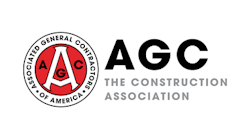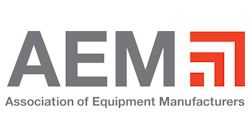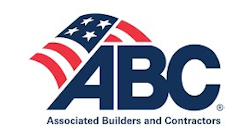If OSHA comes to inspect your job site, you have more rights than you might think. It is highly advisable to know your rights and to advise key employees of them-before any inspections occur.
If OSHA seeks to conduct an investigation, it must have legal probable cause to do so. When the inspector arrives, the employer should be prepared to ask the inspector for his credentials and then inquire as to the basis for the inspection-before allowing the inspection to proceed, says Mark A. Lies II, a labor and employment lawyer and partner with Seyfarth Shaw LLP in Chicago.
Typically, an inspector will announce his inspection because of the following:
- An employee has filed a written complaint alleging a hazard.
- An accident has occurred (in some instances, the employer must notify OSHA of an accident within eight hours where there has been an employee fatality or three or more employees injured in one incident).
- OSHA has selected the employer for an inspection based on a program developed by the agency to target a specific workplace hazard, such as lead, asbestos, forklifts, etc.).
The compliance officer is required to inform the employer of the basis for the inspection, says Lies. If it involves an employee complaint, the employer representative should ask for a copy of the written complaint, which need not name the complaining employee. Likewise, the employer representative should ask for information on the specific programmed inspection that the inspector is relying upon.
Once that information is provided-before deciding whether to allow the inspection-it is critical for the onsite employer representative to immediately contact senior management, as well as legal counsel, especially if there has been an accident involving personal injury or significant property damage. Lies says the employer should strategize on whether to allow the inspection, whom to select for the walk-around team (if an inspection is to take place), and what the scope of the inspection will be at the site.
The employer representative should inform the inspector that this contact is occurring and tell him that the employer will respond in a timely fashion as to whether it will voluntarily allow the inspection without a search warrant. The inspector is required to wait “a reasonable time period” before starting the inspection to allow this communication to occur.
Senior management then must decide whether to allow the inspection, and must do so in a timely manner, says Lies. In cases of an employee complaint, management should consider: (1) Is the complaint valid? (2) Does it identify the correct workplace, employer, or equipment? and (3) Does it identify a hazard that really does exist at the work site?
If there was an accident, management should consider whether, in fact, it involved the employer. Is the accident scene still in existence, or have conditions changed? If the accident involved a fatality, the scene is considered immediately “frozen” and cannot be changed until OSHA starts its inspection and releases the site. The only exception is to allow the employer to shut down equipment that may create a hazard, to respond to a hazardous materials incident, such as a spill or release, or to remove human bodily remains from the scene.
In cases of programmed inspections, does the employer fall within the criteria for the programmed inspection? That is, does that hazard exist at the workplace? Does the employer have another basis to challenge its selection under the program criteria? For example, do the employer’s accident, illness, or injury data fall below the criteria for authorizing the agency to conduct a programmed inspection? If so, the employer should be exempted from the inspection.
The employer has the option to demand a search warrant from OSHA. That is a technical legal decision that must involve legal counsel, says Lies. If the employer decides to allow the inspection on a voluntary basis, the next issue involves the scope of the inspection-where the inspector will be permitted to go on the work site and what operations the inspector will be allowed to view.
That determination is critical, says Lies. Because if the employer allows the inspector broader access than would be allowed to evaluate (1) the hazards identified in the employee complaint, or (2) the accident site area, or (3) hazards that are outside the scope of the hazard referenced in the programmed inspection, the employer is subject to citations for anything that the inspector observes, because the employer allowed a broader inspection to occur. Whatever the inspector observes “in plain view” during the walk-around is subject to citation.
Unless the employer has planned ahead for an OSHA inspection with the onsite representative who will initially interact with the inspector, the employer’s ability to control the inspection will be lost through confusion and indecision, says Lies.
During any inspection, the compliance officer will request employee interviews with both management and non-management people in order to gather facts as to whether violations of regulations occurred. Many employers fail to advise their employees of their rights during such interviews and these rights are never exercised. If the employee gives inaccurate, incomplete, or confusing responses, those statements can be the basis for civil citations with monetary penalties, or worse, criminal liability.
Lies lists the general rights of employees as follows:
- The right to a private one-on-one interview with the compliance officer. That is confidential and is considered “protected activity.” The employee cannot suffer any adverse action from the employer for exercising this right. The compliance officer cannot disclose the contents of the interview.
- The right to refuse to be interviewed by the compliance officer. Some employees feel they may be intimidated or manipulated during the interview to expose them to liability. An employee cannot be forced to have a private one-on-one interview; these interviews are totally voluntary. If the employee declines to be interviewed, and he need not give any reason for doing so, the agency will have to decide whether to obtain a subpoena to require the interview. If the agency obtains a subpoena, the employee has the full scope of rights to respond, including the right to legal counsel.
- The right to have a person of the employee’s choice attend the interview. If the compliance officer refuses to allow this person to attend, the employee can decline to be interviewed.
- The right to end the interview at any time for any reason. Unless OSHA has obtained a subpoena, the employee can end the interview at any time and can leave without any explanation. If OSHA obtains a subpoena, the employee has additional rights and should consult legal counsel.
- The right to refuse to sign a statement, be tape recorded or photographed. Under most states’ eavesdropping laws, any individual can refuse to be tape-recorded and no reason needs to be given.
The employee can have legal counsel present as the accompanying person during the interview. In most jurisdictions, the employer has an obligation to defend its employees when they are faced with liability for acts that occurred within the scope of their employment.
OSHA has the right to interview the employee in private, if the employee consents. And OSHA has the right to receive truthful answers to questions.
The employer has the right to inform employees of their rights during the inspection. And, the employer has the right to participate in non-private employee interviews. If the compliance officer refuses, the employer can require that the interviews occur on non-paid work time. The employer also has the right to end the interviews if they become disruptive, interfere with ongoing work, or become confrontational. If that happens the employer should consult legal counsel regarding the termination of the inspection.








